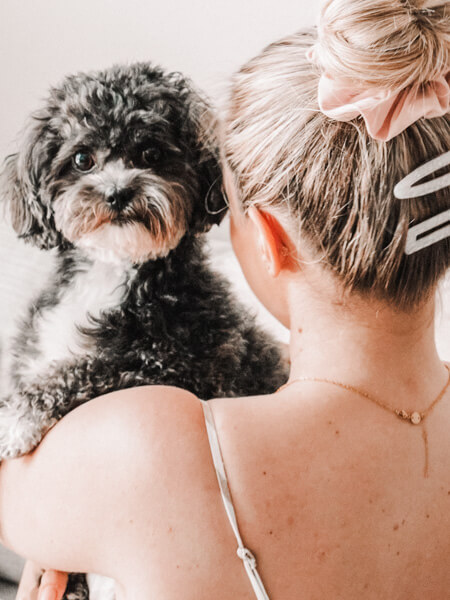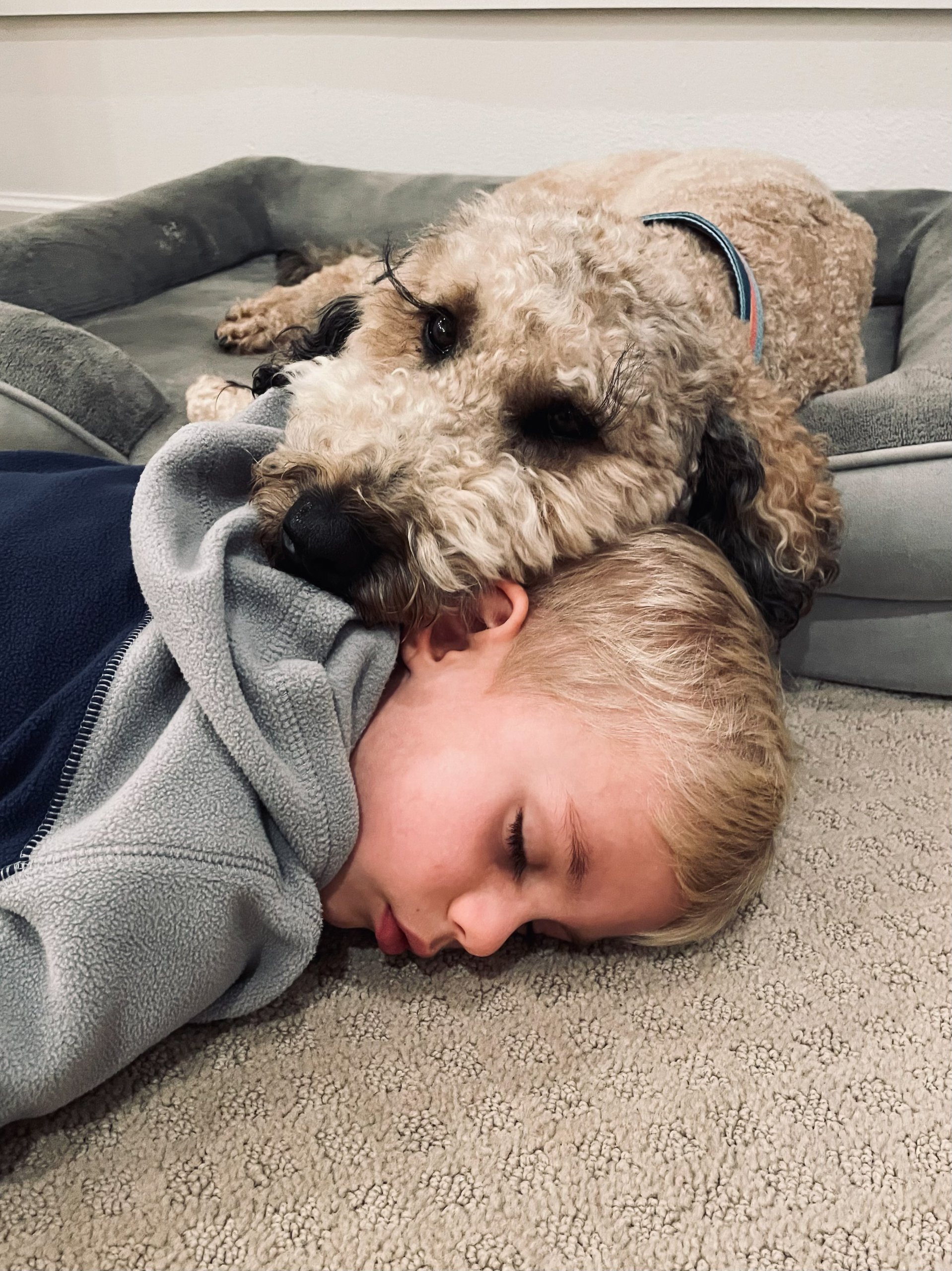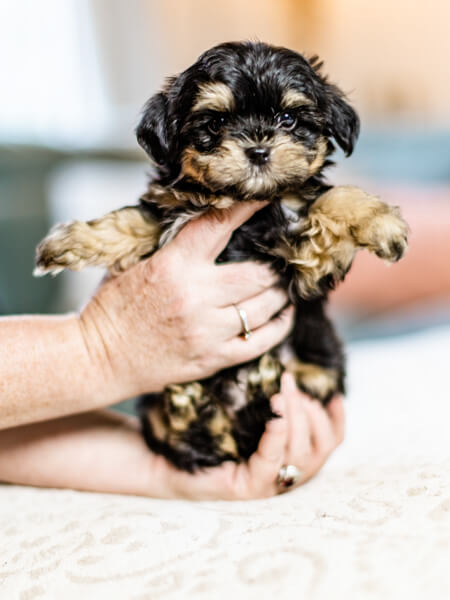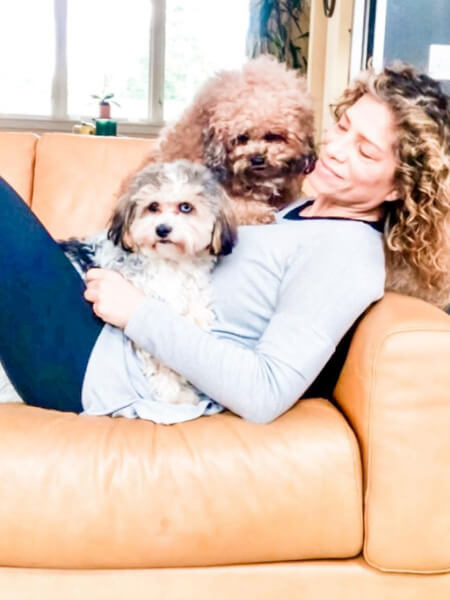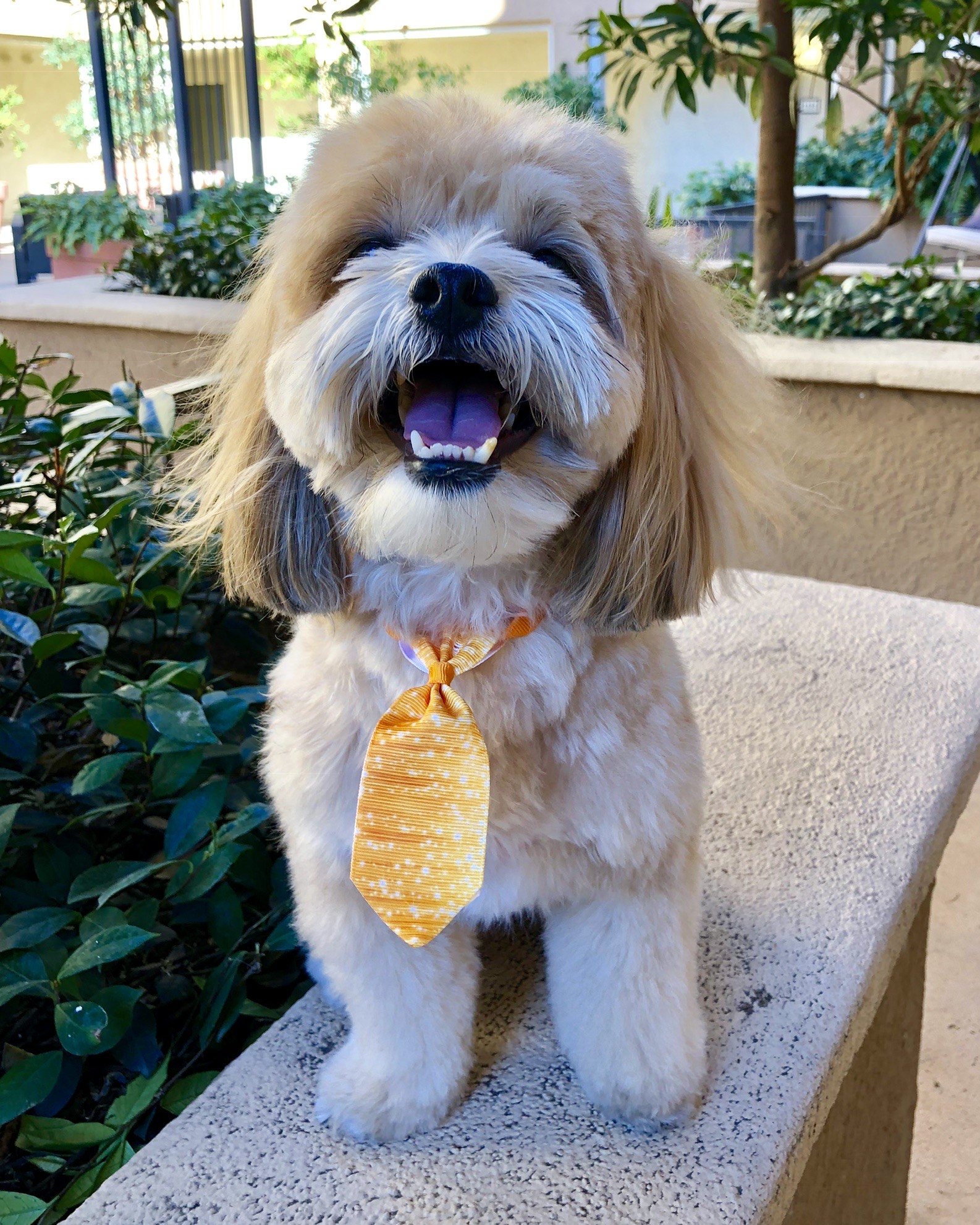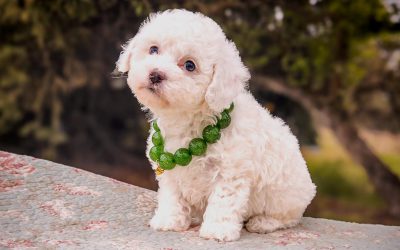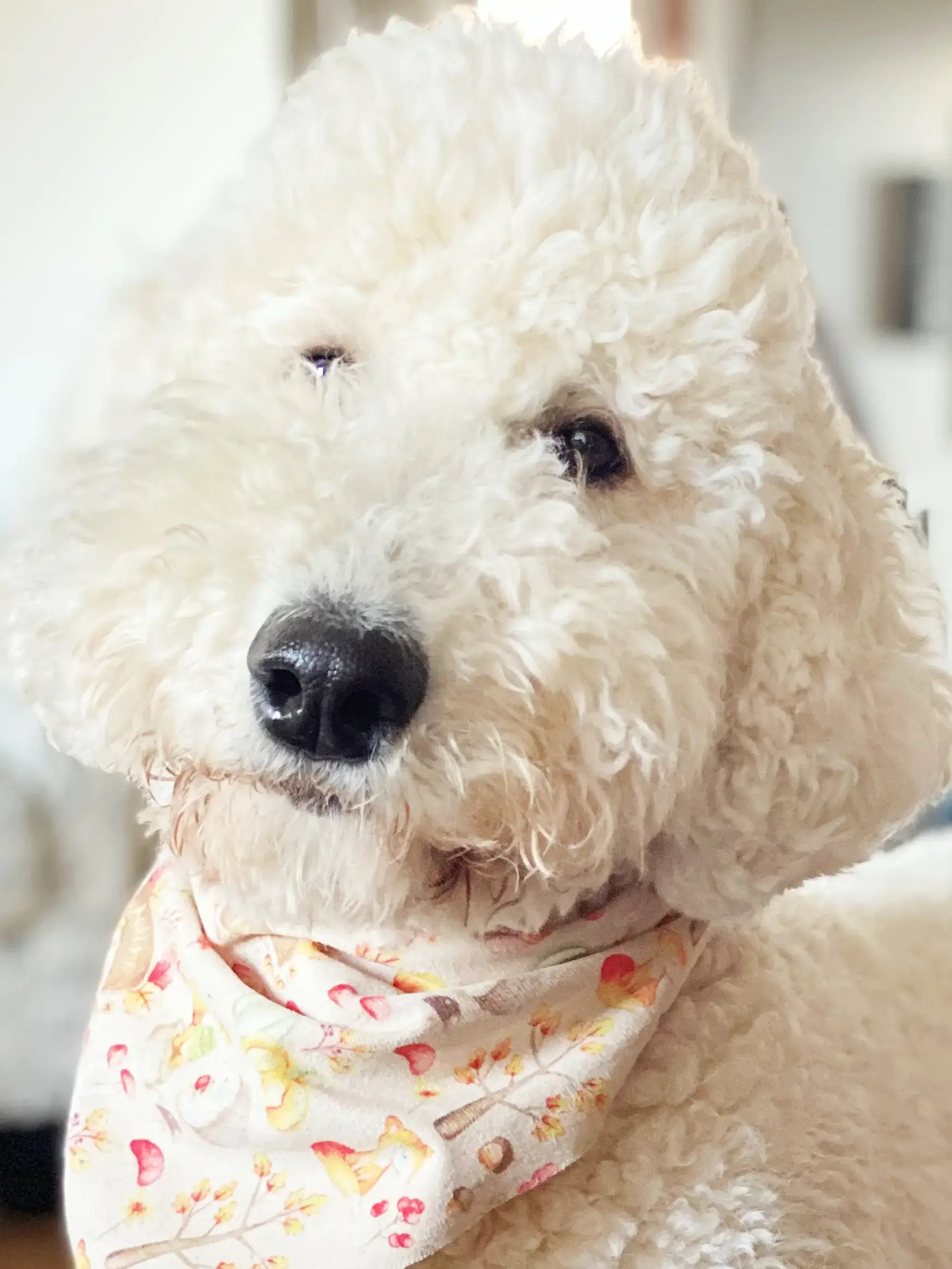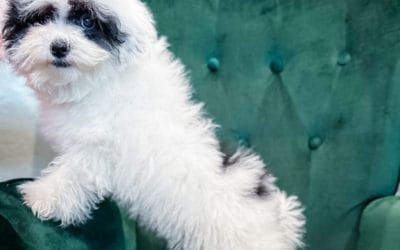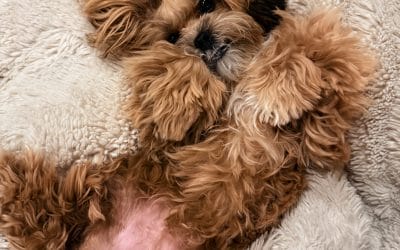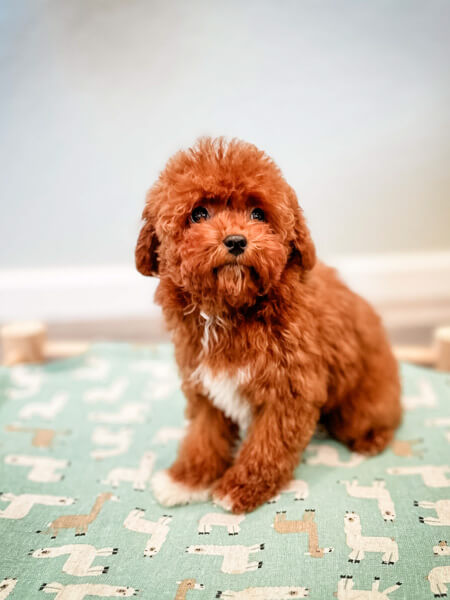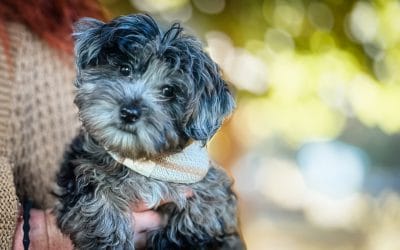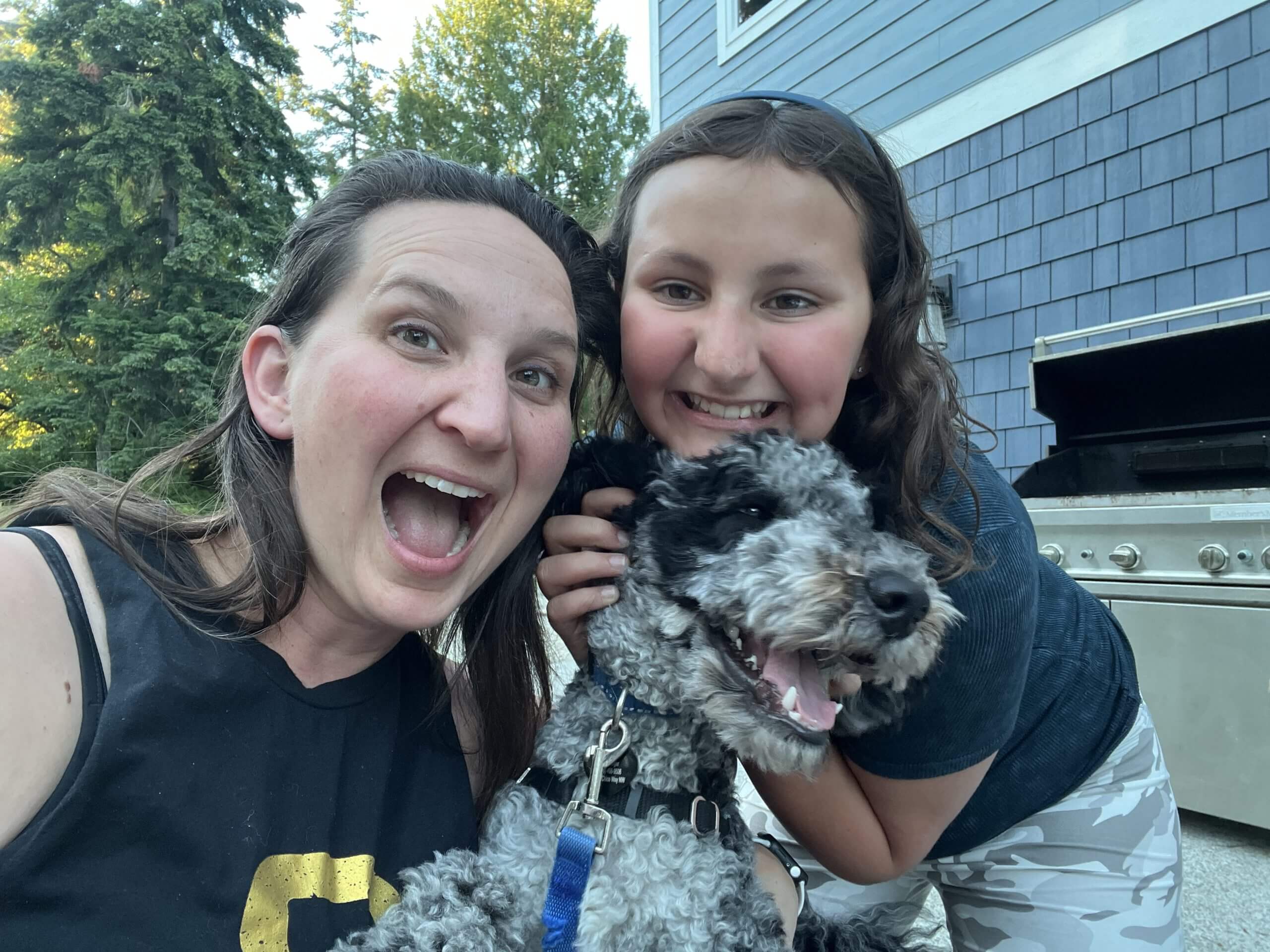
Origins of the Habibi Bear – A New Breed for Today’s World
What Makes Habibi Bears Different?
The Habibi Bear was born out of a need. As I looked at my students, I realized there was a need for a new breed for today’s world. A breed that was allergy-friendly, human-focused, and who thrived with humans instead of tolerated them. A breed that was able to ebb and flow with the world as it is today. So many breeds were created hundreds of years ago, and while the history is great, often the breeding is continuing health problems, while the drives of the dogs are no longer being met … how many people do you know who use their dog to help them put food on the table? It isn’t common.
Today’s world needs a breed that is emotionally in tune with people. A dog who is great with kids, who can bring up the energy in a room, and who can relax during the day, while you’re engaged in work. This is the Habibi Bear.
“These dogs save lives.”
-Mike
At four months old, Honey was relentless about waking up Mike and Bonnie. At first they thought she was just being a playful puppy, struggling to sleep through the night, but she kept waking them up. After the fourth time waking them up, Honey pulled Mike through the front door–an unusual choice for her. That’s when he realized that there was a gas leak. After calling the utility company to come out and investigate, they were told the gas leak was so severe that they only had about 30 minutes left in the home before it would’ve been fatal.
Honey saved their lives. If she hadn’t continued to wake them up, they would’ve continued to sleep to their demise.
The Heart Dog: A Lifetime of Love & Connection
When I think about what makes the perfect family dog, I don’t just think about temperament or breed traits—I think about Lassie. My first dog. My childhood best friend. She was there through every up and down, every scraped knee, every adventure. She was my constant, my comfort, my heart dog.
That bond shaped my life, and it became my mission to create a breed that could bring that same deep, unshakable connection to other families.
For decades, I have carefully cultivated the classic family dog temperament, selecting lines that bring together the very best qualities from the most beloved companion breeds:
-
The unwavering loyalty and gentle, affectionate nature of the Cavalier and Golden Retriever
-
The intelligence, friendly charm, and eager-to-please nature of the Poodle
-
The happy-go-lucky spirit, sweet nature, and playful humor of the Shih Tzu, Maltese & Bichon
This perfect combination is what makes the Habibi Bear more than just a pet—they are heart dogs. The kind of dog your child will remember forever. The kind that becomes a best friend, a source of comfort, a cherished part of the family.
I hear it time and again from families who reach out to share their stories—memories of their childhood dogs, the ones who were always by their side, the ones who made life richer, fuller, and more joyful. That’s what a Habibi Bear is.
A once-in-a-lifetime dog, right from the start. ❤️
The Bond You’ve Always Dreamed Of
There’s something remarkable about a dog who just gets you.
Not in the way a partner or a friend might try to analyze your feelings or fix your bad day—but in a quiet, steady way.
A dog who watches, listens, and somehow knows when to nudge closer, rest their head on your knee, or simply exist beside you without asking for anything more.
This kind of dog doesn’t fill a human role, and they aren’t here to manage your emotions. Instead, they offer something even more grounding: a connection built on trust, presence, and genuine understanding.
They don’t speak your language, but they read your energy.
They don’t carry your worries, but they walk beside you through them.
They’re not your partner in crime—they’re your steady companion, always tuned into the rhythm of your life, content to be part of it without needing to change it.
It’s a relationship rooted in respect.
They see you for who you are—your habits, your quirks, your moods—and love you anyway.
Not because you’ve asked them to, but because it’s simply who they are.
This is the kind of dog that becomes part of your story—not as a replacement for human connection, but as a loyal presence that offers something uniquely, beautifully canine:
A bond built on mutual trust, intuition, and quiet love.
Allergy Friendly
Hypoallergenic Habibi Bears – all the cuddles minus the sneezes
While our breed is considered what is commonly referred to as Hypoallergenic, allergy-friendly and non-shedding; this only means the breed is less reactive than other breeds. Non-shedding dogs release less dander into the air than a shedding dog, which results in fewer allergy reactions. The word Hypoallergenic is a marketing term. Allergies are subjective to many factors and are different for each and every person. Not every person is allergic to dander, some are allergic to saliva, or both. We have successfully placed puppies in homes of many allergy sufferers, but we have also had a small handful that are reactive. In order to decide if our Habibi Bears are a good choice for you, if we cannot arrange for you to meet one of our dogs in your area, we offer a special service that is performed before choosing day, using a simple T-Shirt test. Be sure to ask us if there is a family in your city, many times we can arrange for you to meet an adult Habibi Bear.
T-Shirt Testing
If you are considering a Habibi Pup and suffer from allergies, please let us know so you can send your T-Shirt for testing before choosing day. You will send us one clean T-Shirt per puppy you are considering, laundered in your detergent, and place each shirt in its own ziplock baggie. (If you like 2, send two separate shirts, If you like three, send three), include the return pre-paid mailer in your package and We will expose one shirt to each individual puppy, seal it, and send back asap. (We recommend the USPS priority flat rate mailer as it comes insured) The shirt is then worn for at least 30 minutes-to an hour and up to all day, to see if you have a reaction. If you are testing more than one puppy, allow time in-between each T-Shirt test. Most people that react will start to do so within a half hour, however some people have slept in a shirt to see if they react.
This is a free service – families only pay for the shipping & return shipping label. We take allergies seriously enough to do this testing ourselves at our own expense. We respect allergy sufferers’ desire to live with a dog. That’s why we go above and beyond for our families, whose dreams comes true with their new family member!

What Size are Habibi Bears?
The Perfect Fit, No Matter the Size

Small
Teacup & Toy
3-7 (Micro) & 7-12 lbs • 7-11 inches
Teacups are not just small, they’re mighty -think big dog in a small package! They’re the perfect companions for families who travel and want their pup to fly in-cabin, bringing a big personality and endless love in a tiny frame.
They stand below the knee.
Miniature
12-20 lbs • 11-15 inches
Think Mini Schnauzer/Mini-Poodle size. The Miniature Habibi Bears are a little taller and stouter than the teacups, but most can still easily fly in-cabin. They are the perfect size for younger children too.
They stand below the knee.
Moyen
20-45 lbs • 14-24 inches
Moyens are a great fit for families needing a dog for Autism or Anxiety support to apply pressure, for outdoor lifestyles, or those wanting a bigger dog. They cannot fly in-cabin without service dog certification.
They stand between the knee & hip.
Choosing the Perfect Habibi Bear Size for Your Lifestyle
We’ll help you pick the best size for you!
Size plays an important role in selecting the ideal dog for your family. It influences not only general care and maintenance but also factors like outdoor activities and travel ease. While temperament remains the most crucial element when choosing your Habibi Bear, we understand that size also matters.
Our personalized approach ensures you get the right fit for your lifestyle. Through thoughtful conversations, we’ll help you identify the size that seamlessly integrates into your day-to-day life. Whether you’re seeking a smaller dog for easy portability or a larger one for outdoor adventures, we are here to guide you in making the best choice.
Habibi Bears; A Blend of Love, Health & Intuition
The Genetically Diverse Habibi Bear
This exact combination of genes is proprietary information, but the result is undeniable:
People can’t help falling in love with Habibi Bears.
Our Habibi Bears are the product of a deliberate breeding strategy aimed at increasing hybrid vigor and reducing the genetic coefficient of inbreeding (COI) resulting from centuries of line breeding in the purebred parent lines. This approach ensures that our dogs are not only healthy but also possess a vibrant and engaging disposition. As the DNA of our dogs is a blend of various breeds, certain complexities may arise with DNA testing. It’s important to note that the accuracy of these tests can be limited, and they may not always reflect the full genetic history of our dogs.
We prioritize the well-being of our Habibi Bears by avoiding inbreeding and maintaining genetic diversity. Our dedication is to provide families with dogs that are not only physically sound but also have the temperament to be loving companions.
Mutt, Hybrid, or Purebred
The definition of a mutt is, “a dog of unknown ancestry.” While our dogs were developed from different breeds, known as hybrids- that is where our similarities end. Our dog’s ancestry has been purposefully selected, and pedigrees have been cataloged for over 30 years to track our progress. This is how many breeds were created in the Victorian Era, but instead of inbreeding as was the common practice, we have modern-day science to select healthy dogs, and DNA testing to help us choose the perfect combos to eliminate genetic issues
“A breed is a mental construct only; nothing more. For the truth is, that there is no such thing in nature as an animal breed. All distinctions in animal taxonomy below the species level are relative, transient, and ephemeral. Zoology does not even deal with “breeds” – it admits only subspecies and variations within a species and argues endlessly about those.
It is created as a practical matter when type requirements and, more importantly, a pedigree barrier are set in place. Animals conforming to the type requirements are then bred inter se (to use Agriculture’s language) behind the protection of the pedigree barrier, usually under an inbreeding regime.” – J. Jeffrey Bragg, Seppala Siberian Huskies

What Breeds are in the Habibi Bear?
Established in 1989: The Perfect Dog
for Today’s Families
Developed with care and intention, the Habibi Bear is a breed free of hard-to-manage drives, designed to be intuitive, human-focused, and the ultimate companion for modern families.

In our search for the perfect temperament, without compromising health, we decided to use various breeds. These breeds, while they all have their own health dynamics, don’t suffer from these dynamics when crossed, as the complement of the various breeds removes the chance that they get two copies of a detrimental gene. Thus, we get the beloved Habibi Bear temperament and a healthier dog than the original purebred breeds!
To create the Habibi Bear, we utilized the breeds listed below; some of these breeds appear in the genetic background of our parent dogs from years past. Click on each breed to discover why it was chosen and its contribution to the Habibi Bear!
The Habibi Bear combines the best traits of several companion breeds, including Bichon Frisé family breeds, Shih Tzu, Poodle, Schnauzer, and Cavalier King Charles Spaniel, Goldendoode & Aussiedoodle. Our dogs feature rare multigen lines of Goldendoodle with straight coats and Aussiedoodle contributes to the merle gene in the background. This genetic blend improves their hypoallergenic coats, even temperaments, and emotional sensitivity.
How Much Does a Schnoodle Cost?
How much does a Schnoodle cost? Learn the average price and key factors that affect what you’ll pay for this smart, lovable hybrid pup.
How Big Does a Schnoodle Get? A Complete Size Guide from Habibi Bears
How big does a Schnoodle get? Learn about Schnoodle sizes from toy to standard in this quick guide from Habibi Bears.
Poodle
Poodle When I started on this journey, it all began with a Poodle named Toulouse. He was our foundation sire, and he brought us many beautiful little souls that touched countless hearts in numerous ways. Poodles are very near and dear to my heart, and I wouldn't be...
Bichon Family: Bichon, Coton & Maltese
The Bichon Family of breeds have a similar history and are wonderful dogs with their clownlike presonality and hypoallergenic coats. They pair beautifully with the breeds in our line to balance the structure
Shih Tzu
Oh, Shih Tzus—such a key part of our Habibi Bear’s signature Teddy Bear face! With their big, soulful eyes and adorable stocky build, they bring so much charm and devotion.
To ensure the best health, we’ve carefully balanced our Shih Tzu lines with longer-nosed breeds, improving breathing while preserving their sweet, human-focused nature. Our rare imported lines add genetic diversity and clear health screenings, making them a priceless part of the Habibi Bear’s vitality and signature look!
Cavalier King Charles Spaniel
I am obsessed with Cavaliers—this breed infusion is pure magic! 🐶✨ There’s a reason they were the lapdogs of royalty—they are incredibly endearing, calm, and loving.
Their classic expressions, beautiful faces, and soulful eyes bring so much to our Habibi Bears. And in 2025, I officially reached the milestone of infusing Cavaliers into every size!
The best part? Our Cavalier lines come from rare, 100% clear DNA, an almost impossible find in this breed. This infusion has been a game-changer, adding grace, charm, and heart to our beloved dogs. 💛
GoldenDoodle
While searching for exceptional therapy and companion temperament traits, we were introduced to a specialty line of Goldendoodles bred specifically for this purpose. Among them was a stunning merle Goldendoodle and a 4 lb sire, which allowed us to infuse this beautiful genetic diversity into our entire line. This infusion brought gentle, intuitive qualities, and while highly diluted now, traces of this lineage may still appear in small percentages.
AussieDoodle
The Aussiedoodle is part of our dogs’ background and the source of the merle gene in our line. While researching rare genetics, I discovered merle Poodles, which I knew resulted from an infusion since merle isn’t in the original Poodle genetics. Rather than seeing this as a flaw, I embraced it as an opportunity for greater genetic diversity. Genetic testing confirmed the Australian Shepherd influence—score! At this point, the gene is highly diluted, but we have the Aussiedoodle to thank for this added diversity!
Schnauzer
One of our foundation breeds that put us on the map. Our original line was a specialty line that was bred to have calm and gentle personality and were very human focused. These sweet natured Schnauzers were the unique genetic that lent to our gentle and sweet...

